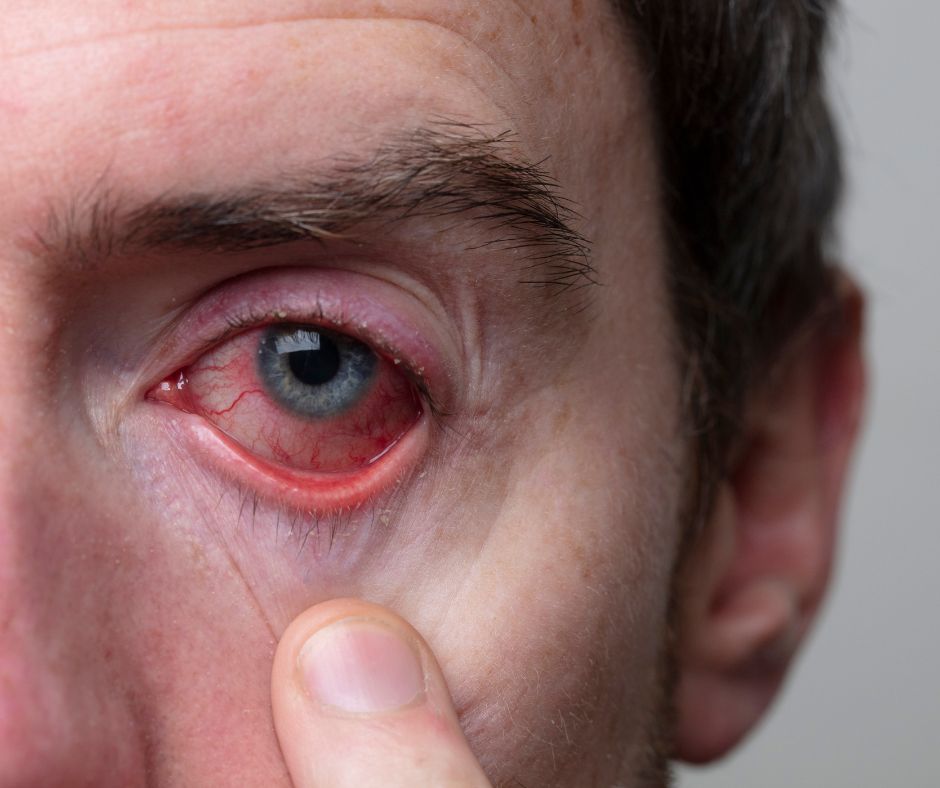
21 May Common Ocular Emergencies
In times of sudden eye trauma or severe vision issues, knowing how to respond promptly is crucial. Ocular emergencies demand immediate attention to prevent lasting damage or vision loss. Understanding the signs and symptoms of these critical situations can make a significant difference in seeking timely medical help. By recognizing the urgency of ocular emergencies and acting swiftly, individuals can protect their eyesight and overall eye health.
1. Chemical Burns
Chemical burns in the eye can occur due to exposure to various substances like household cleaners or industrial chemicals. These chemicals can lead to severe damage if not treated promptly.
When a chemical burn affects the eye, individuals may experience pain, redness, tearing, and even vision changes. These symptoms indicate the urgent need for medical attention.
If someone experiences a chemical burn in the eye, it is crucial to act swiftly. The first step is to flush the eye with water or saline for at least 15 minutes. This helps to remove the chemical from the eye and minimize further damage. Remember, avoid rubbing the eye, as this can exacerbate the injury.
In such cases, seeking immediate medical attention is vital. Even if symptoms seem mild initially, it’s essential to have a healthcare professional assess the extent of the injury. Medical intervention can prevent long-term complications and preserve vision.
2. Foreign Objects
Foreign objects that can enter the eye include dust, metal shavings, insects, and more. These particles often lead to irritation and discomfort.
Symptoms of having a foreign object in the eye may include discomfort, tearing, redness, and a persistent feeling of something being lodged in the eye.
When you experience these signs, it’s crucial to address the issue promptly to prevent further damage. The first step is to avoid rubbing the eye. Rubbing can worsen the situation by causing the object to scratch the cornea. Next, try blinking. Sometimes, blinking rapidly can help dislodge minor particles from the eye. You should also rinse with water or saline. Flushing the eye with clean water or saline solution can help remove loose debris. If the object remains stuck or if you suspect it’s embedded in your eye, seek immediate medical attention.
3. Retinal Detachment
Aging, trauma, high myopia, and previous eye surgery are common factors contributing to retinal detachment. The aging process weakens the retina, making detachment more likely.
The sudden appearance of floaters, flashes of light, or a shadow or curtain over vision can indicate retinal detachment. These symptoms should never be ignored. To prevent further damage to the detached retina, keep the head still. Also, make sure to avoid any strenuous activity that could worsen the condition.
Retinal detachment is a serious condition that requires timely intervention. If left untreated, it can lead to permanent vision loss. Therefore, recognizing the signs and symptoms early on and taking swift action is paramount in preserving vision health.
4. Blunt Trauma To The Eye
Blunt trauma to the eye can occur due to various reasons, including sports injuries, falls, and physical altercations. These incidents can lead to severe damage to the eye if not addressed promptly.
When an individual experiences blunt trauma to the eye, they may exhibit bruising, swelling, pain, and vision changes. These symptoms should never be ignored as they could indicate significant internal damage.
Upon encountering blunt trauma to the eye, it is crucial to take immediate steps to mitigate further harm. Begin by applying a cold compress to the affected area to reduce swelling and alleviate discomfort. However, it is essential to remember not to apply pressure directly on the injured eye as this can exacerbate the condition. Seeking prompt medical evaluation is imperative in such situations to rule out any potential internal damage that may not be immediately apparent.
5. Sudden Vision Loss
Stroke, retinal artery occlusion, and optic neuritis are common causes of sudden vision loss. The complete or partial loss of vision in one or both eyes is a critical sign of an ocular emergency. Seek emergency medical care immediately upon experiencing sudden vision loss. Time is crucial in preserving your eyesight. Do not drive yourself; have someone else take you to the hospital. Driving with compromised vision poses risks to yourself and others on the road.
When faced with sudden vision loss, it’s vital to understand the urgency of the situation. This isn’t a time for self-diagnosis or home remedies; prompt medical intervention is essential for proper diagnosis and treatment.
Ignoring sudden vision loss can have severe long-term implications on your eye health. Conditions such as retinal artery occlusion, if left untreated, can lead to permanent vision impairment or even blindness.
In times of ocular emergencies, quick action is key. Understanding the common causes, recognizing symptoms early, and knowing when to seek help can make all the difference. By following first aid basics, preventing incidents, and being aware of potential risks like chemical burns or foreign objects, you can safeguard your vision.
Your eyesight is precious, so take care of it. Remember the signs, know what to do, and act promptly. If you are suffering from an ocular emergency and need help right away, contact Dr. D’Orio Eyecare today! Call us at 416 656 2020 for our Toronto location, or 416 661 5555 for our North York location.


